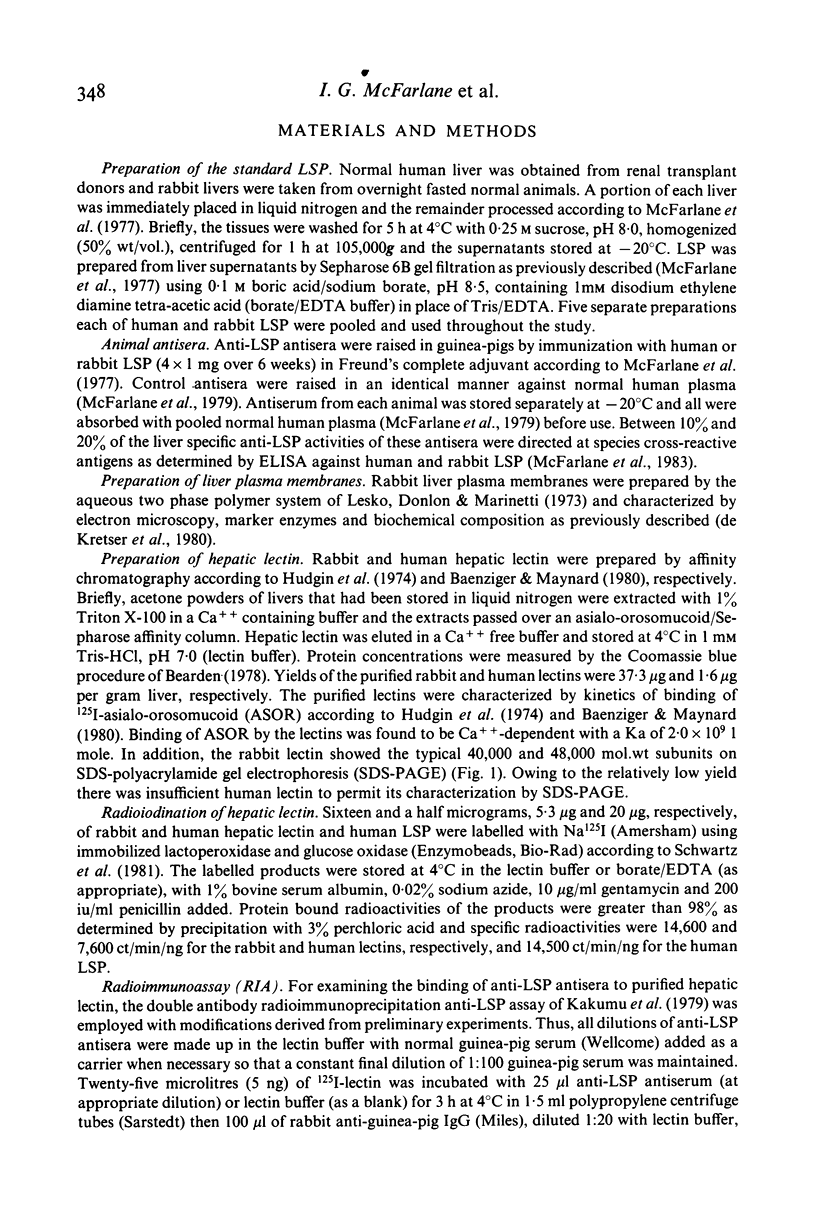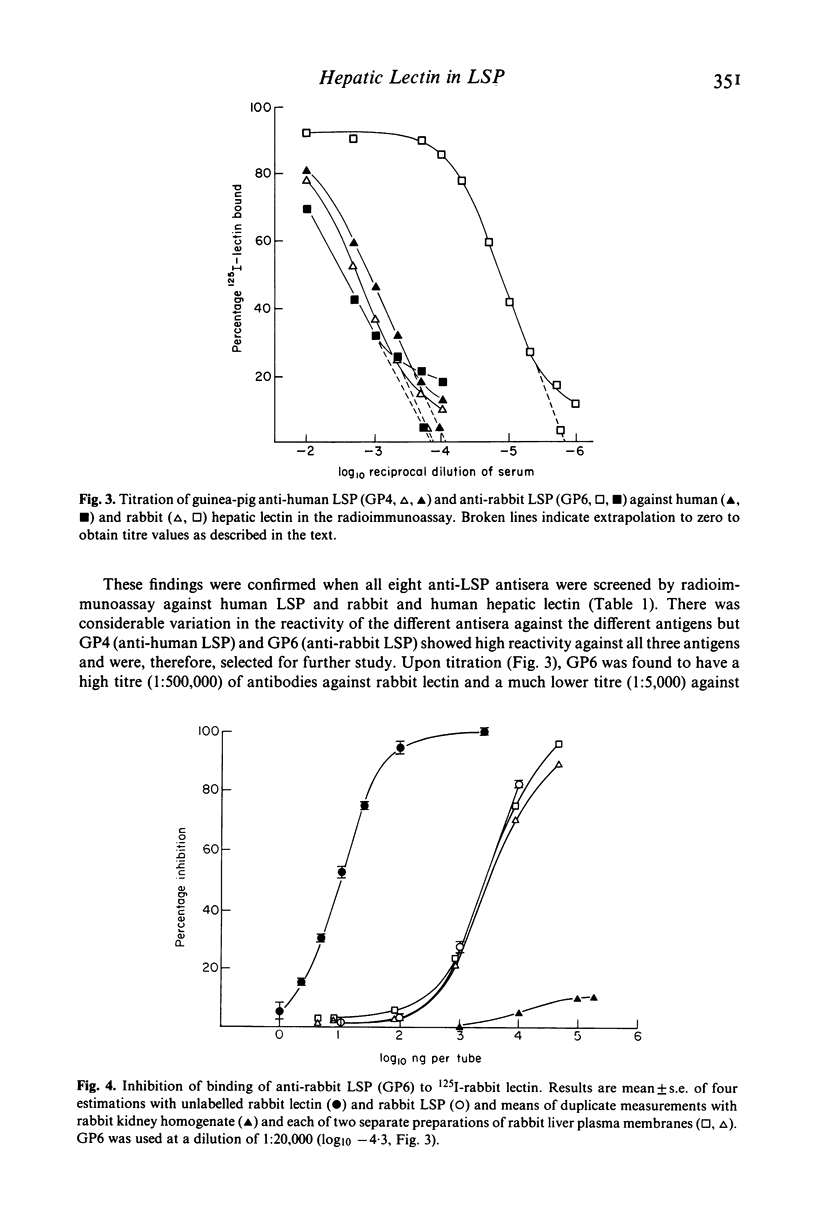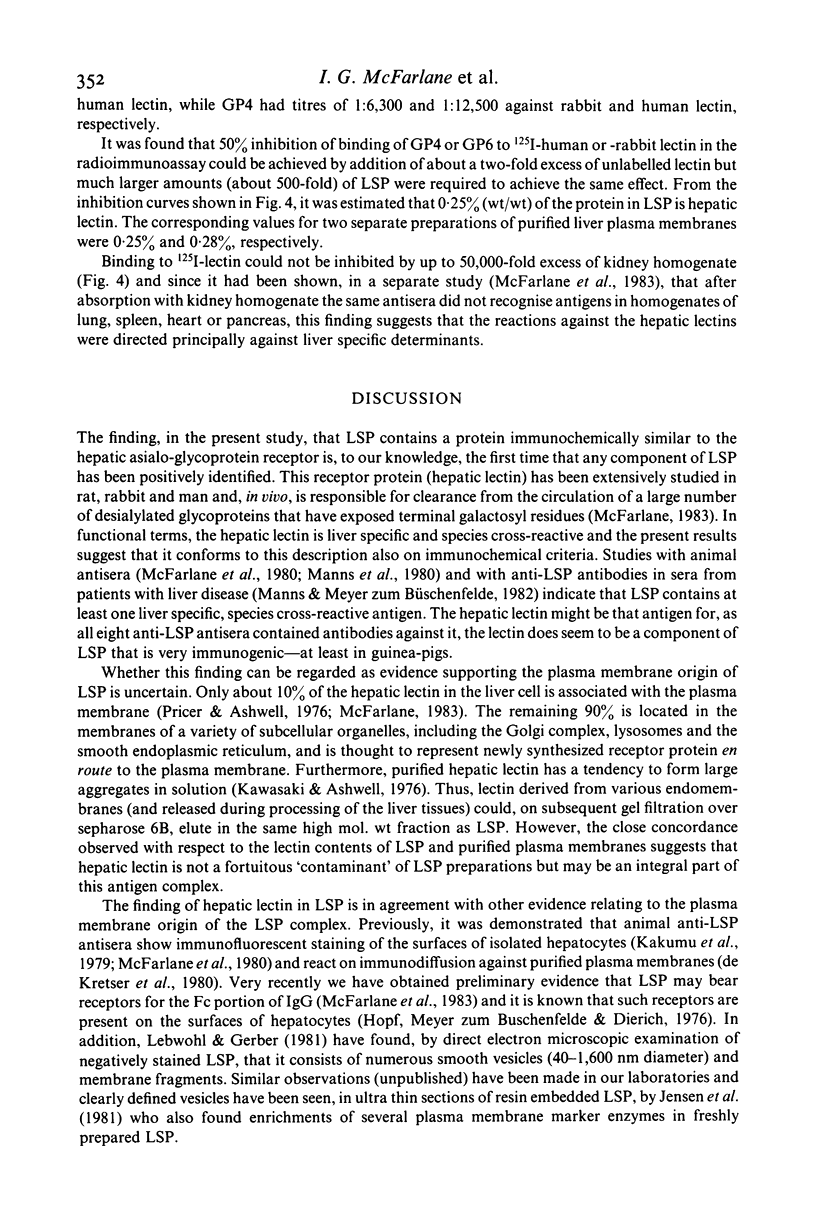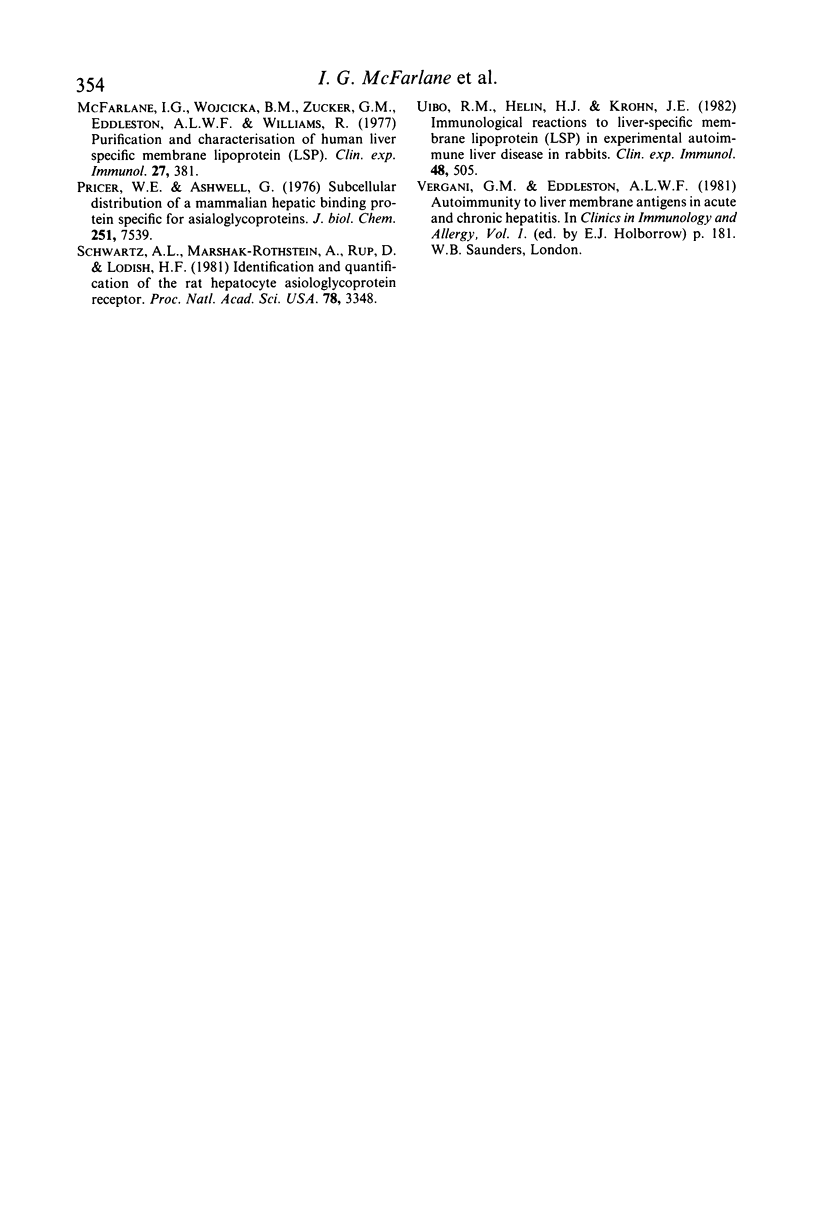Abstract
Liver specific membrane lipoprotein (LSP), the target for anti-LSP antibodies in various liver diseases, is thought to be comprised of fragments of the hepatocellular plasma membrane. In the present study, therefore, evidence has been sought for the presence in LSP of the hepatocyte surface receptor (hepatic lectin) that binds desialylated glycoproteins. Eight guinea-pig anti-LSP antisera (four anti-human and four anti-rabbit LSP) were found to react by ELISA and/or RIA against affinity purified human and rabbit hepatic lectin. Binding of the antisera to 125I-hepatic lectins was inhibited by the unlabelled lectins, by human and rabbit LSP and by purified rabbit liver plasma membranes but not by a 50,000-fold excess of kidney homogenate. The results indicate that hepatic lectin is a liver specific, species cross-reactive antigen comprising about 0.25% of the protein in LSP.
Full text
PDF







Images in this article
Selected References
These references are in PubMed. This may not be the complete list of references from this article.
- Baenziger J. U., Maynard Y. Human hepatic lectin. Physiochemical properties and specificity. J Biol Chem. 1980 May 25;255(10):4607–4613. [PubMed] [Google Scholar]
- Bearden J. C., Jr Quantitation of submicrogram quantities of protein by an improved protein-dye binding assay. Biochim Biophys Acta. 1978 Apr 26;533(2):525–529. doi: 10.1016/0005-2795(78)90398-7. [DOI] [PubMed] [Google Scholar]
- Chisari F. V. Liver-specific protein in perspective. Gastroenterology. 1980 Jan;78(1):168–170. [PubMed] [Google Scholar]
- De Kretser T. A., McFarlane I. G., Eddleston A. L., Williams R. A species-non-specific liver plasma-membrane antigen and its involvement in chronic active hepatitis. Biochem J. 1980 Mar 15;186(3):679–685. doi: 10.1042/bj1860679. [DOI] [PMC free article] [PubMed] [Google Scholar]
- Hopf U., Meyer zum Büschenfelde K. H., Dierich M. P. Demonstration of binding sites for IgG Fc and the third complement component (C3) on isolated hepatocytes. J Immunol. 1976 Aug;117(2):639–645. [PubMed] [Google Scholar]
- Hopf U., Meyer zum Büschenfelde K. H., Freudenberg J. Liver-specific antigens of different species. II. Localization of a membrane antigen at cell surface of isolated hepatocytes. Clin Exp Immunol. 1974 Jan;16(1):117–123. [PMC free article] [PubMed] [Google Scholar]
- Hudgin R. L., Pricer W. E., Jr, Ashwell G., Stockert R. J., Morell A. G. The isolation and properties of a rabbit liver binding protein specific for asialoglycoproteins. J Biol Chem. 1974 Sep 10;249(17):5536–5543. [PubMed] [Google Scholar]
- Kakumu S., Arakawa Y., Goji H., Kashio T., Yata K. Occurrence and significance of antibody to liver-specific membrane lipoprotein by double-antibody immunoprecipitation method in sera of patients with acute and chronic liver diseases. Gastroenterology. 1979 Apr;76(4):665–672. [PubMed] [Google Scholar]
- Kawasaki T., Ashwell G. Chemical and physical properties of an hepatic membrane protein that specifically binds asialoglycoproteins. J Biol Chem. 1976 Mar 10;251(5):1296–1302. [PubMed] [Google Scholar]
- Klingenstein R. J., Wands J. R. Immunologic effector mechanisms in hepatitis B-negative chronic active hepatitis. Springer Semin Immunopathol. 1980 Dec;3(3):317–329. doi: 10.1007/BF02054107. [DOI] [PubMed] [Google Scholar]
- Lebwohl N., Gerber M. A. Characterization and demonstration of human liver-specific protein (LSP) and apo-LSP. Clin Exp Immunol. 1981 Nov;46(2):435–442. [PMC free article] [PubMed] [Google Scholar]
- Lesko L., Donlon M., Marinetti G. V., Hare J. D. A rapid method for the isolation of rat liver plasma membranes using an aqueous two-phase polymer system. Biochim Biophys Acta. 1973 Jun 22;311(2):173–179. doi: 10.1016/0005-2736(73)90264-2. [DOI] [PubMed] [Google Scholar]
- Manns M., Meyer zum Büschenfelde K. H., Hess G. Autoantibodies against liver-specific membrane lipoprotein in acute and chronic liver diseases: studies on organ-, species-, and disease-specificity. Gut. 1980 Nov;21(11):955–961. doi: 10.1136/gut.21.11.955. [DOI] [PMC free article] [PubMed] [Google Scholar]
- McFarlane I. G. Hepatic clearance of serum glycoproteins. Clin Sci (Lond) 1983 Feb;64(2):127–135. doi: 10.1042/cs0640127. [DOI] [PubMed] [Google Scholar]
- McFarlane I. G., Wojcicka B. M., Tsantoulas D. C., Portmann B. C., Eddleston A. L., Williams R. Leukocyte migration inhibition in response to biliary antigens in primary biliary cirrhosis, sclerosing cholangitis, and other chronic liver diseases. Gastroenterology. 1979 Jun;76(6):1333–1340. [PubMed] [Google Scholar]
- McFarlane I. G., Wojcicka B. M., Williams R. Antigens of the human liver. Clin Exp Immunol. 1980 Apr;40(1):1–7. [PMC free article] [PubMed] [Google Scholar]
- McFarlane I. G., Wojcicka B. M., Zucker G. M., Eddleston A. L., Williams R. Purification and characterization of human liver-specific membrane lipoprotein (LSP). Clin Exp Immunol. 1977 Mar;27(3):381–390. [PMC free article] [PubMed] [Google Scholar]
- Pricer W. E., Jr, Ashwell G. Subcellular distribution of a mammalian hepatic binding protein specific for asialoglycoproteins. J Biol Chem. 1976 Dec 10;251(23):7539–7544. [PubMed] [Google Scholar]
- Schwartz A. L., Marshak-Rothstein A., Rup D., Lodish H. F. Identification and quantification of the rat hepatocyte asialoglycoprotein receptor. Proc Natl Acad Sci U S A. 1981 Jun;78(6):3348–3352. doi: 10.1073/pnas.78.6.3348. [DOI] [PMC free article] [PubMed] [Google Scholar]
- Uibo R. M., Helin H. J., Krohn K. J. Immunological reactions to liver-specific membrane lipoprotein (LSP) in experimental autoimmune liver disease in rabbits. Clin Exp Immunol. 1982 May;48(2):505–512. [PMC free article] [PubMed] [Google Scholar]



